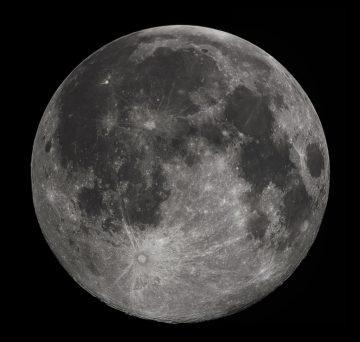Lincoln Allison in Engelsberg Ideas:
 University College, Oxford, October 1964: the economics fellow, David Stout, has assembled the twelve freshmen PPE students for their first class. This is an unusual procedure as lectures and individual tutorials are the normal means of teaching, but Stout is preoccupied with persuading any government and political party that will listen of the virtues of something called ‘value added tax’ and wants to meet all the students together. I am one of them and I have done none of the preparation for this class, being entirely preoccupied with such matters as rugby and new friends, but I am hoping that my ‘A’ and ‘S’ level economics from fifteen months earlier will enable me to get by. Actually, there are only eleven of us. Enter the twelfth to the traditional sarcastic remark from the tutor. The new arrival has long black hair and a black beard and wears a black scholar’s gown. With his hooked nose and rimless spectacles he seems like an edgy and hyperactive raven. He is carrying all six of the books recommended for the class which he deposits unceremoniously on the floor. ‘So this is economics?’ he demands and David Stout replies that these books are about welfare economics which is regarded by many as the foundation of the subject. ‘It’s based on a mistake,’ snaps the raven and the rest of the class is devoted to the tutor defending his subject from aggressive interrogation. It is increasingly obvious that the raven is at least the intellectual equal of the tutor.
University College, Oxford, October 1964: the economics fellow, David Stout, has assembled the twelve freshmen PPE students for their first class. This is an unusual procedure as lectures and individual tutorials are the normal means of teaching, but Stout is preoccupied with persuading any government and political party that will listen of the virtues of something called ‘value added tax’ and wants to meet all the students together. I am one of them and I have done none of the preparation for this class, being entirely preoccupied with such matters as rugby and new friends, but I am hoping that my ‘A’ and ‘S’ level economics from fifteen months earlier will enable me to get by. Actually, there are only eleven of us. Enter the twelfth to the traditional sarcastic remark from the tutor. The new arrival has long black hair and a black beard and wears a black scholar’s gown. With his hooked nose and rimless spectacles he seems like an edgy and hyperactive raven. He is carrying all six of the books recommended for the class which he deposits unceremoniously on the floor. ‘So this is economics?’ he demands and David Stout replies that these books are about welfare economics which is regarded by many as the foundation of the subject. ‘It’s based on a mistake,’ snaps the raven and the rest of the class is devoted to the tutor defending his subject from aggressive interrogation. It is increasingly obvious that the raven is at least the intellectual equal of the tutor.
More here.

 It’s not possible. There must be a rational explanation. Surely, you say to yourself, there is a logical justification. But no matter how hard you look, there is no answer that aligns with what you know about reality. With the magician’s final deception, the last act of their trick, the audience encounters the impossible: a bird appears out of thin air, a person begins to levitate and fly, or private thoughts are read like pages in a book. Magicians do things spectators know aren’t possible. This is the power of illusion. As the American magician Simon Aronson put it in 1980: ‘There’s a world of difference between a spectator’s not knowing how something’s done versus his knowing that it can’t be done.’ But magic is not only an encounter with the impossible. It is also an encounter with the perceptual machinery we use to assemble reality.
It’s not possible. There must be a rational explanation. Surely, you say to yourself, there is a logical justification. But no matter how hard you look, there is no answer that aligns with what you know about reality. With the magician’s final deception, the last act of their trick, the audience encounters the impossible: a bird appears out of thin air, a person begins to levitate and fly, or private thoughts are read like pages in a book. Magicians do things spectators know aren’t possible. This is the power of illusion. As the American magician Simon Aronson put it in 1980: ‘There’s a world of difference between a spectator’s not knowing how something’s done versus his knowing that it can’t be done.’ But magic is not only an encounter with the impossible. It is also an encounter with the perceptual machinery we use to assemble reality. My colleagues Gary Gerstle and
My colleagues Gary Gerstle and  L
L Sad times are inevitable, and most people eventually rally. But clinical depression is different, and more brutal. All sense of well-being evaporates; life can seem not worth the trouble. According to one estimate, more than 60% of people worldwide who have attempted suicide have a depressive disorder (
Sad times are inevitable, and most people eventually rally. But clinical depression is different, and more brutal. All sense of well-being evaporates; life can seem not worth the trouble. According to one estimate, more than 60% of people worldwide who have attempted suicide have a depressive disorder (

 The United States may regard itself as a “
The United States may regard itself as a “ For humans, biologically speaking, soul mates are entirely real. But just like all relationships, soul mates can be complicated. Of course, there isn’t a scientifically agreed-upon definition for “soul mate.” But humans are in a small club in the animal kingdom that can form long-term relationships. I’m not talking about sexual monogamy. Humans evolved with the neurocircuitry to see another person as special. We have the capacity to single someone out from the crowd, elevate them above all others and then spend decades with them.
For humans, biologically speaking, soul mates are entirely real. But just like all relationships, soul mates can be complicated. Of course, there isn’t a scientifically agreed-upon definition for “soul mate.” But humans are in a small club in the animal kingdom that can form long-term relationships. I’m not talking about sexual monogamy. Humans evolved with the neurocircuitry to see another person as special. We have the capacity to single someone out from the crowd, elevate them above all others and then spend decades with them. At its height in the 1840s, the West African kingdom of
At its height in the 1840s, the West African kingdom of  Marco D’Eramo in Sidecar:
Marco D’Eramo in Sidecar: John Burn-Murdoch in the FT (image © Bloomberg):
John Burn-Murdoch in the FT (image © Bloomberg):